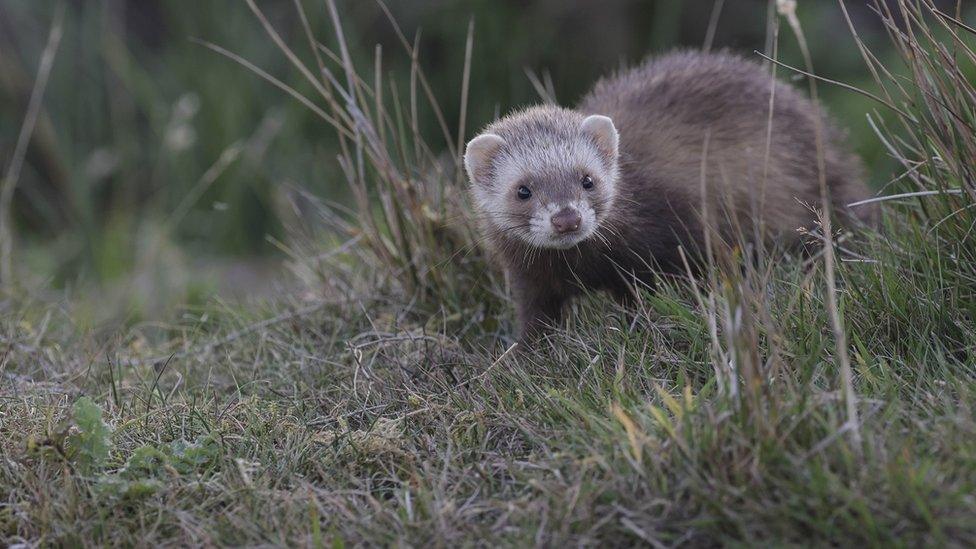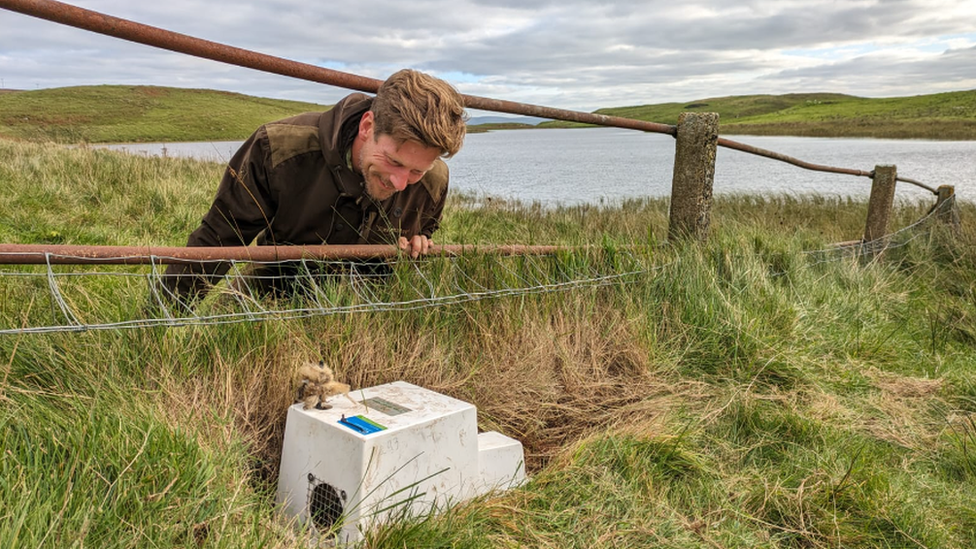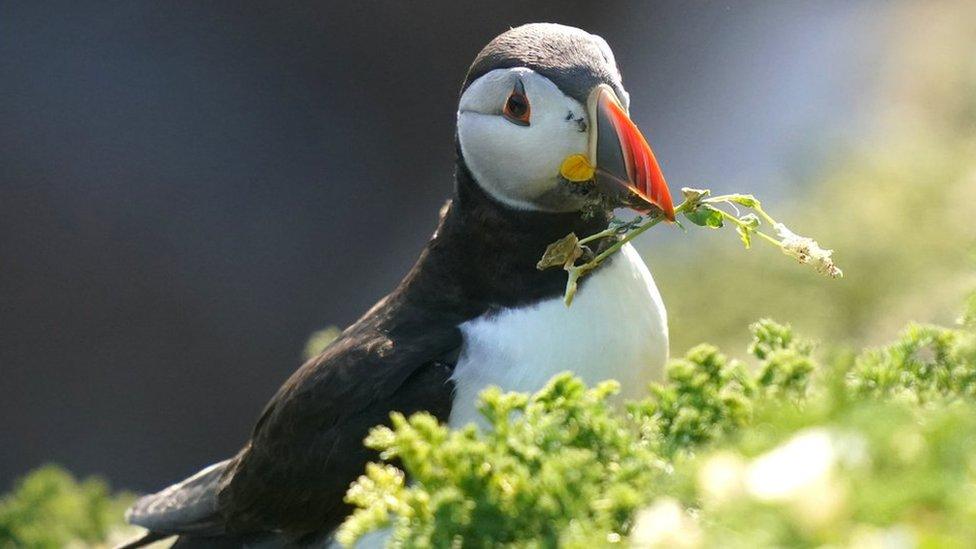Rathlin Island: LIFE Raft project ferret traps activated
- Published

Ferrets are believed to have been introduced to Rathlin Island in the 1980s
The first of more than 400 ferret traps have been activated on Rathlin Island.
They have been laid as part of a project to eradicate non-native predators from the island so that species like the puffin can flourish.
Puffins are the arguably the most famous symbol of Rathlin.
But with numbers on the island declining by 74% since 1999, the race is on to protect the colourful ground-nester from predators before the balance tips.
In a world first, the LIFE Raft project will see ferrets and rats trapped to eradicate non-natives from the island.
The traps have been placed in a grid formation across the island.
They are pre-baited, meaning the ferrets can explore them without becoming trapped.
But now that they have been activated, the animals will either be contained in them for removal or humanely killed automatically when the trap closes.

Ulf Keller checking one of the traps on Rathlin Island
It will take at least four days to activate all 450 traps by hand, with team members walking from one end of the island to the other.
Wireless monitoring is being used on all the 'live' traps and most of the 'kill' ones.
Traps will be checked within 24 hours of an alert being triggered.
It is thought that the majority of ferrets could be removed from the island by as soon as Spring 2024.
Six thousand bait stations are also being laid to target the rat population.
The £4.5 million project will continue until 2026 - by which time those behind the project hope all ferrets and rats will be removed, restoring the island to a safe haven for internationally significant breeding seabirds.
As well as puffins, the island, off the County Antrim coast, is home to razorbills, kittiwakes, Manx shearwaters, guillemots and fulmars.
Monitoring will continue beyond the five-year project to maintain biosecurity.
Voracious hunters
Similar projects have been undertaken on the Isles of Scilly, in the Shiants off Scotland and, most recently, on Gough Island in the south Atlantic
But this is the first time that ferrets will be targeted as part of a conservation effort like this.
Rats most likely arrived on boats more than a century ago.

Puffin numbers on Rathlin have gone down in recent years
But ferrets, voracious and efficient hunters, were released deliberately to control the rabbit population.
Both species quickly turned their attentions to the seabirds and their young.
They are now all over the island, leading to fears that matters were at a tipping point.
Winter is the best time to target predators, who will be getting hungry as their prey migrates from the island.
But protecting the seabird population is also about protecting people.
The economy on the island relies on thousands of visitors who come every year for the wildlife.
Related topics
- Published7 January 2023
